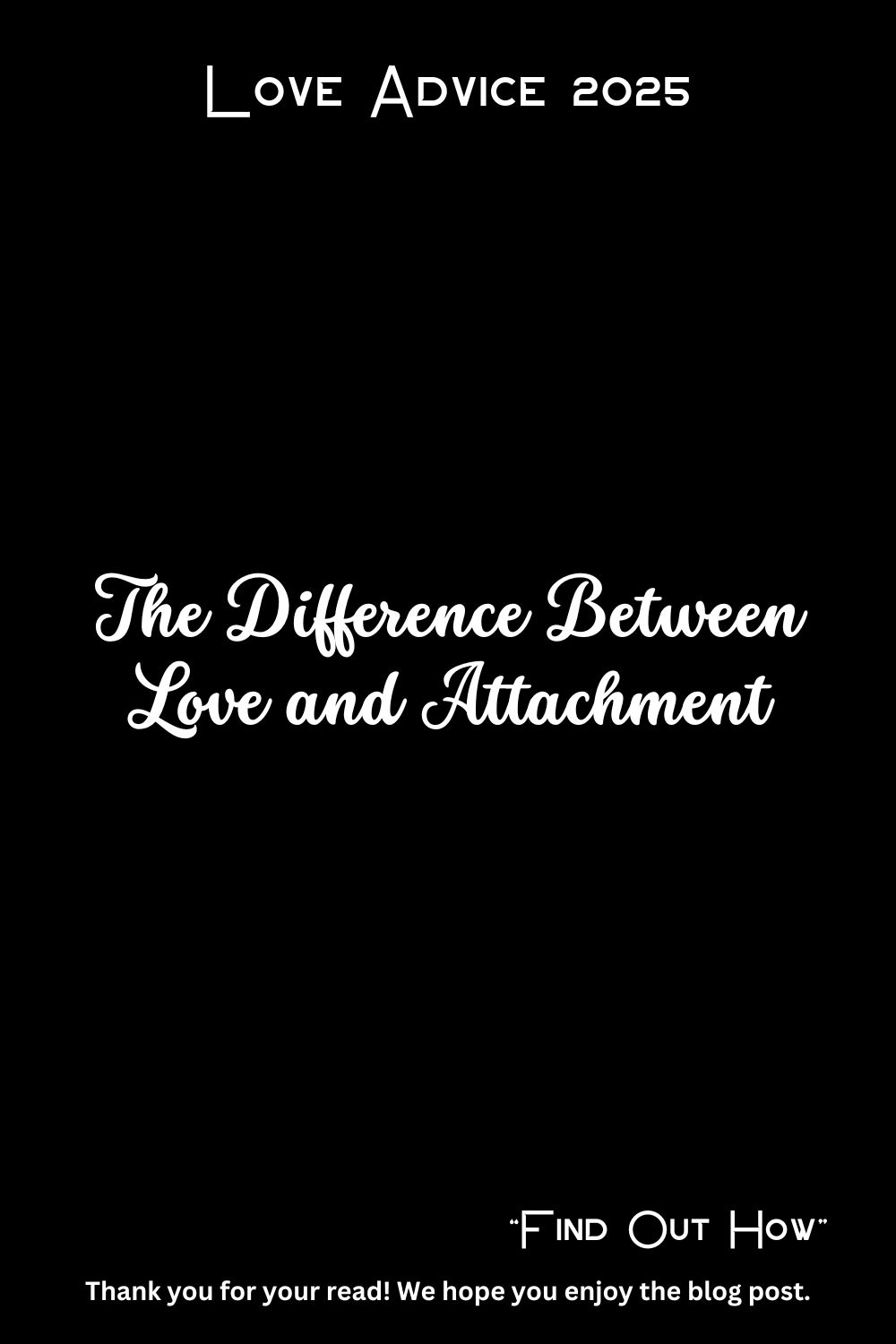While love and attachment often feel intertwined, they are fundamentally different at their core. Love is selfless, expansive, and rooted in freedom—it seeks to nurture, support, and uplift the other person without trying to possess or control them. True love allows space for growth, respects boundaries, and finds joy in giving without expectation. It asks, “How can I support your happiness, even if it doesn’t always involve me?” In contrast, attachment often stems from unmet emotional needs or fear—fear of being alone, fear of loss, or fear of not being enough.
Attachment clings and controls; it seeks constant reassurance and views the other person as a source of security or validation. It’s more about fulfilling a personal need than about caring for the other person as they are. While love is about freedom, attachment is often about fear. Love grows stronger with distance and trust; attachment grows anxious and unstable when space is given.
The key difference lies in intention: love flows from wholeness, while attachment arises from a place of emotional dependence. Recognizing this distinction helps us build healthier, more meaningful relationships—ones that are rooted in mutual respect, trust, and genuine connection rather than need, fear, or control.
Love vs. Attachment: How to Tell the Difference
Understanding the difference between love and attachment can transform the way we relate to others—and to ourselves. Here’s a deeper breakdown with examples and signs:
1. Intentions & Mindset
Love:
“I want what’s best for you, even if it’s not with me.”
➤ Love is about giving, supporting, and trusting. It’s grounded in freedom and respect.Attachment:
“I need you to be here so I can feel okay.”
➤ Attachment is about needing, clinging, and often stems from insecurity or fear of loss.
2. Emotional Stability
Love:
Creates emotional balance. You feel safe, secure, and peaceful—even when apart.
➤ Love is calm, patient, and consistent.Attachment:
Creates emotional turbulence. You feel anxious, jealous, or unsettled when you’re not with the person.
➤ Attachment often triggers fear, control, or dependency.
3. Boundaries
Love:
Respects boundaries. You honor your partner’s individuality, needs, and space.
➤ You want to grow with them, not own them.Attachment:
Struggles with boundaries. You may try to control their actions, isolate them, or get upset when they prioritize themselves.
➤ There’s fear of losing control or not being “needed.”
4. Dependency
Love:
Comes from wholeness. You love them because you want them, not because you need them to complete you.
➤ Love is two complete people choosing each other.Attachment:
Comes from lack. You rely on them for happiness, identity, or self-worth.
➤ “Without them, I feel empty.”
5. Reactions to Conflict
Love:
Seeks understanding and resolution. Love listens, apologizes, and grows through challenges.
➤ Conflict strengthens the bond when love is present.Attachment:
Seeks control or escape. Attachment becomes reactive, manipulative, or overly emotional during conflict.
➤ It often turns into blame, guilt, or emotional shutdown.
6. Freedom vs. Possession
Love:
Love is liberating. It wants the best for the other person, even if it means letting go.
➤ Love trusts the bond.Attachment:
Attachment is possessive. It wants to hold on tightly, even at the cost of both partners’ happiness.
➤ Attachment fears loss more than it values health.
Real-Life Example:
Love:
A partner encourages you to pursue your goals, supports your need for alone time, and celebrates your individuality. They’re happy when you’re happy—even if it doesn’t revolve around them.Attachment:
A partner gets upset when you spend time with friends, discourages independence, and constantly needs reassurance. They feel threatened by your growth or change.
The most beautiful relationships are rooted in love, not need. Love says, “I see you, I support you, and I choose you.” Attachment says, “I need you, or I’ll fall apart.” When we learn to recognize the difference, we begin to love more freely, more maturely, and more deeply.





